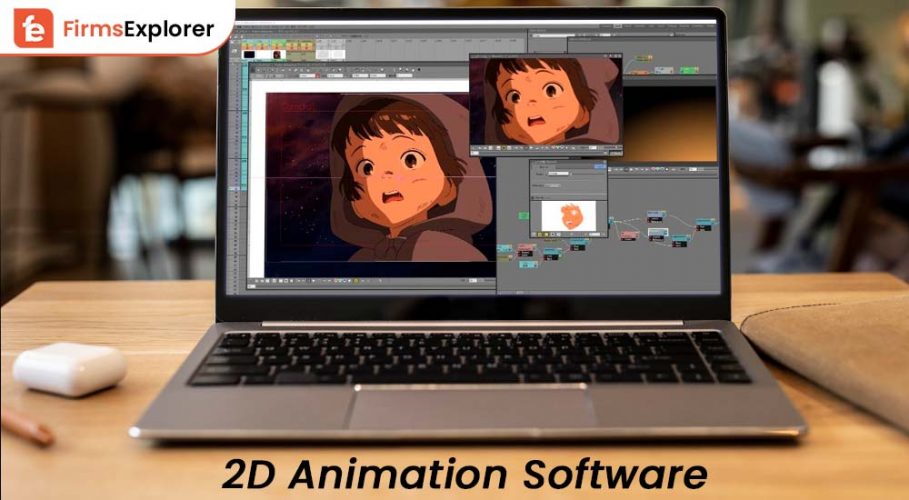
The buzz about cryptocurrencies such as Bitcoin, Ethereum, and more has been continuous from past many years now. Although most people know what cryptocurrencies are, they are not really aware of the technology behind them. Many financial specialists say Blockchain technology is the state-of-the-art database that is the heart of nearly all cryptocurrencies. But what is Blockchain technology exactly? Many influential personalities believe Blockchain has an impact beyond our mere financial portfolios.
It can actually transform our lives in multiple ways in the coming future. Bob Greifeld, Nasdaq Chief Executive, considers Blockchain technology as the biggest opportunity for humankind we can think of till the next decade. So, what does blockchain mean? How does Blockchain technology work? If you want to learn about blockchain in simple words, then you have stopped by the right place! In this article, we will learn all about this decentralized technology and how blockchain applications work.
As already mentioned above, Blockchain is the core technology behind the operations of cryptocurrencies like Ethereum, Bitcoin, and more. To understand blockchain technology correctly, let us answer what it is. It is a distributed digital ledger system that can store data securely. For instance, using it, you can store and save data about your crypto transactions, NFT possession, or smart contracts. You may ask if any standard dataset can store this kind of data; what’s special about Blockchain technology?
In essence, it is entirely decentralized, unlike other systems. Instead of being monitored or run by a centralized admin of a particular location, Blockchain employs distributed ledger technology (DLT), in which copies of a blockchain dataset are recorded only on computers having access. The data is spread through a network known as “nodes.” Now, anyone using Blockchain can become a node. However, there are some computational requirements to become one. Nodes authorize, authenticate, and collect data within the ledger.
Conventional record-keeping procedures and systems are far from this process. Thus, blockchain collects data in a central place, similar to a computer server. A blockchain organizes pieces of data added to the ledger known as data groups or blocks. Each block can store a limited amount of data. That is why there is new blocks are frequently added to the ledger, forming a chain. A cryptographic “hash” is a unique identifier assigned to every block. The hash protects the information inside the block from anyone who attempts to access it without the necessary code and safeguards its position in the chain by identifying and remembering the block that came before it. After the data is entered and the Blockchain development is completed and encrypted with a hash, it becomes permanent and immutable.
Every node is stored along with its record of the entire timeline of data and the Blockchain, starting from its beginning. So, even when unauthorized access tries to hack one computer and manipulate the data for their gain, it would not change the information stored by other nodes. Hence, the changed record can be recognized and rectified since it will not complement the entire data. Still confusing, let’s understand Blockchain technology in simple words – Think of it like a digital ledger, similar to a Google spreadsheet shared with various computers in a network. Based on the genuine authorization, transactional records are accessed and stored. The unique aspect of blockchain technology is that it allows people to view the data, but they cannot modify or corrupt it.
Read Also – Best AI Trading Software, Platforms & Apps
In the last few years, you may have seen multiple news of business owners adopting or investing in blockchain technology. This mass adoption makes everyone wonder how does Blockchain technology work? Is this a routine tech advancement or a breakthrough?
The progressions of this new technology are still in their early phase and may revolutionize in the future. But before we conclude anything, let us first understand how blockchain technology works. As a digital ledger, blockchain technology is nothing but a “chain” containing separate “blocks” of information. As new data is added to this system, a new “block” generates automatically and connects with the chain. Simultaneously, all preexisting nodes update their position and version of the blockchain ledger to stay paired. This is the main reason behind the unmatched security of blockchain.
Most nodes authenticate and authorize the legitimacy of the new information before any new block is included in the ledger. The system might also authenticate recent transactions in a block for cryptocurrencies to confirm that the activity was not for hacking. Blockchain technology differs greatly from a standalone spreadsheet or database, where one person can make modifications without any supervision.
Transactions are fundamentally protected using cryptography. It simply means that the nodes have to solve difficult mathematical equations to complete every transaction. Understanding how Blockchain works can be simplified by referring to an example. So, let’s look at an example of blockchain authenticating and storing Bitcoin transactions.
Since the Blockchain for Bitcoin mining is open to the public, anyone who owns Bitcoin can view the transaction history. Even if the record identifies which accounts are making transactions on the Blockchain, it might be challenging to trace the identity of an account. Any user with the required processing capacity can participate in authorizing and storing transactions as a node on public blockchains. But not all blockchains are open to the public.
They may be created as private ledgers, allowing the owner to control who can modify or add to the Blockchain. There may be fewer participants on a private blockchain, but it is still decentralized among the contributors. Additionally, private blockchains use the same encryption techniques to protect the security of any data gathered inside the database. Interest in the idea of a secure, decentralized permanent data record has spread to other businesses. It may hold answers to a number of the security challenges, record-keeping procedures, and data ownership problems we currently face. This prompts the further question:
How is Blockchain technology being applied across various industries? Let’s have a brief look.
Blockchain uses are becoming wider day by day. Its use cases, such as for managing financial services or voting systems, have become popular. So, we can safely say that Blockchain technology has become a reliable way of storing data for various types of transactions.
Today, blockchain technology has become popular as the key mechanism behind cryptocurrencies. When people exchange, purchase or spend cryptocurrency, the processes are authenticated and stored on a blockchain.
Blockchain can securely manage transactions for fiat currency, such as euros and dollars. This could be faster than saving money in a bank or financial institution. Because of the speedy transaction authentication, one can complete the process without waiting for regular working hours.
Read Also – Benefits of RPA in Business, Healthcare, and Banking
Blockchain can also be used to track and transfer the ownership of various assets. Digital assets like NFTs, which reflect the ownership of digital art and media, are currently increasingly popular for this. Blockchain technology can be used to process the ownership of tangible things, such as legal documents for real estate and automobiles.
The Blockchain would be used by both parties to a transaction first to verify who possesses the property and who has the funding before the sale could be completed and recorded. They could finally transfer the property deed utilizing this process without having to physically submit documentation to update the local region’s government records.
Another vital blockchain technology use case is self-implementing contracts, also known as smart contracts. These are automatically authorized digital contracts that come with certain limitations and conditions.
Supply chains include vast amounts of data, mainly because of the goods moving to various locations. With outdated data recording methods, it can become difficult to track down the root cause of a problem. For instance, it can be challenging to trace one vendor who supplies low-quality products among hundreds of the same. Blockchain technology can help here by individually storing every vendor’s information in a secure manner.
Specialists are exploring ways to utilize Blockchain to stop fraud in voting. Theoretically, blockchain voting can enable voters to submit votes that no one can manipulate. In addition, it would get rid of the condition of having people collect and validate paper ballots.
With many practical applications of blockchain technology already being implemented and explored, it is setting itself apart. Its operations are now seen beyond bitcoin and cryptocurrency. However, even when they use it as a buzzword on the tongue, people do not know how blockchain works. We hope this article has made blockchain meaning clear to you.
Now active for business and government operations with efficient, accurate, secure, and cheap outcomes, you can consider using blockchain to grow your business. If you’re new to it, you should consider starting with it now. Today, we see the tokenization of assets and the proliferation of NFTs; we may see blockchain becoming fundamental in the next decade. Let us know what you think about blockchain technology in the comments section below!

October 7, 2022

December 22, 2022

September 26, 2022
Deprecated: File Theme without comments.php is deprecated since version 3.0.0 with no alternative available. Please include a comments.php template in your theme. in /home/firmsexplorer/public_html/wp-includes/functions.php on line 5613